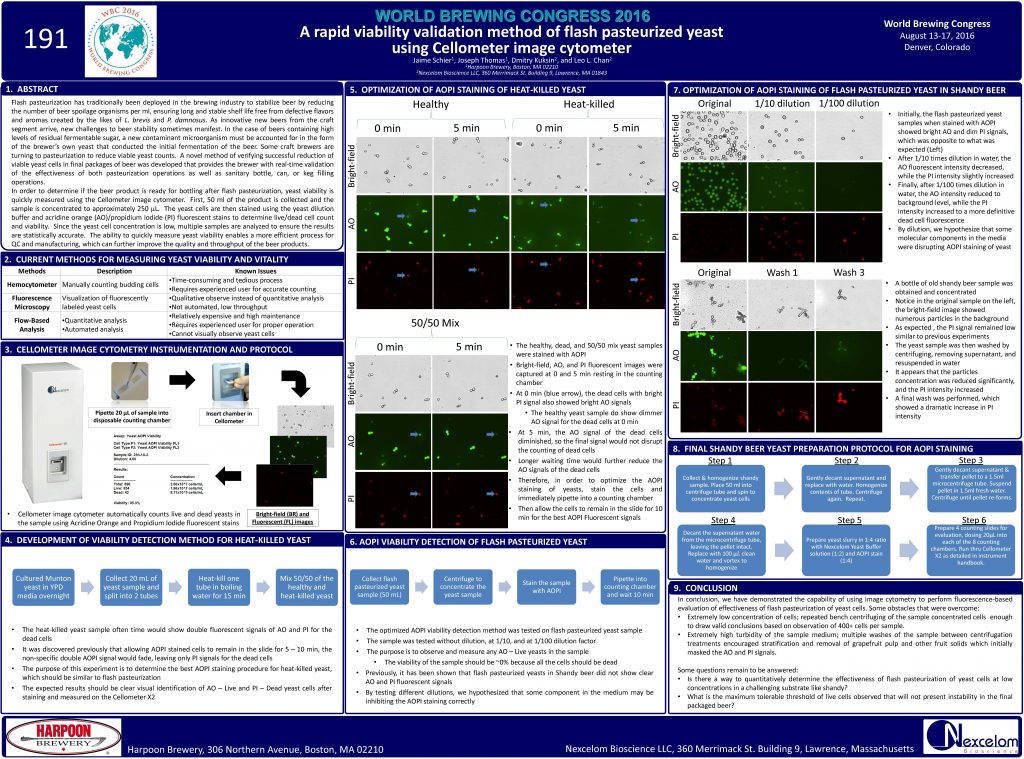A rapid viability validation method of flash pasteurized yeast using Cellometer image cytometer
Jaime Schier, Joseph Thomas, Dmitry Kuksin, and Leo L. Chan
Flash pasteurization has traditionally been deployed in the brewing industry to stabilize beer by reducing the number of beer spoilage organisms per ml, ensuring long and stable shelf life free from defective flavors
and aromas created by the likes of L. brevis and P. damnosus. As innovative new beers from the craft segment arrive, new challenges to beer stability sometimes manifest. In the case of beers containing high levels of residual fermentable sugar, a new contaminant microorganism must be accounted for in the form of the brewer’s own yeast that conducted the initial fermentation of the beer. Some craft brewers are turning to pasteurization to reduce viable yeast counts. A novel method of verifying successful reduction of viable yeast cells in final packages of beer was developed that provides the brewer with real-time validation of the effectiveness of both pasteurization operations as well as sanitary bottle, can, or keg filling operations. In order to determine if the beer product is ready for bottling after flash pasteurization, yeast viability is quickly measured using the Cellometer image cytometer. First, 50 ml of the product is collected and the sample is concentrated to approximately 250 µL. The yeast cells are then stained using the yeast dilution buffer and acridine orange (AO)/propidium iodide (PI) fluorescent stains to determine live/dead cell count and viability. Since the yeast cell concentration is low, multiple samples are analyzed to ensure the results are statistically accurate. The ability to quickly measure yeast viability enables a more efficient process for QC and manufacturing, which can further improve the quality and throughput of the beer products.

